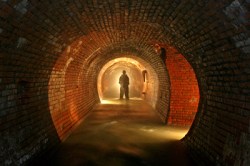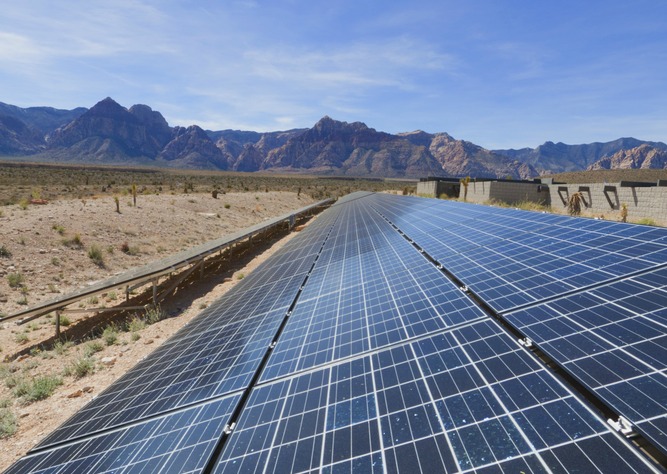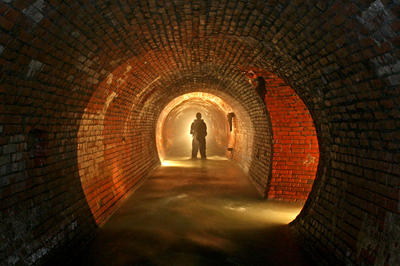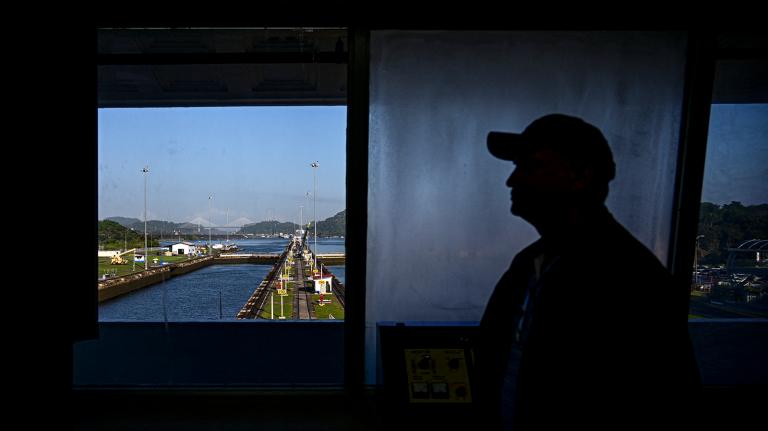
Andrew Emond
Most urban streams and creeks are hidden from sight — in huge sewer tunnels under streets and expressways, in concrete ditches behind razor-wire fences, and sometimes even in pipes under the manicured lawns and gardens of city parks.
These are hardly the kinds of places you’d see on the cover of an L.L. Bean catalog — although you might find a few L.L. Bean catalogs in these concrete creeks.
But a growing network of urban explorers, who sometimes call themselves “drainers,” are sneaking into the storm sewers and aqueducts to rediscover these long-hidden waterways. They’re finding lush forest groves among the concrete ditches and waterfalls and grand vaulted grottoes in underground sewers. Their photography and field notes remind residents that the rivers and streams that nursed their cities’ early growth still survive below the pavement, and are still worthy of appreciation — maybe even restoration.
Now, not one, but two new documentary films follow this small subculture of urban river enthusiasts, and celebrate the outsized impact of their civilly disobedient urban river expeditions.
The Canadian feature Lost Rivers premiered earlier this month at Toronto’s Planet in Focus Festival. It follows drainers in cities from Yonkers, N.Y., to Seoul, South Korea, and threads together small narratives about how river explorers, with varying degrees of official support, are drawing public attention to urban rivers and promoting ambitious visions for their restoration. Here’s the trailer:
In Brescia, Italy, the film introduces a small cadre of drainers as they pry off manholes on dark streets. Known as the Associazione Brescia Underground, they won recognition from the city after officials took notice of their amazing photographs of the medieval bridges and Roman-era aqueducts that existed right under the pavement. Now, with the city’s blessing, they lend out waders and lead popular guided tours into the sewers.
From there, Lost Rivers moves on to cities where advocates have successfully convinced their communities to unearth and restore their rivers as a way to revitalize downtrodden downtown neighborhoods.
In one stretch of the restored Cheonggyecheon stream in Seoul, three broken highway abutments have been preserved to memorialize the elevated expressway that once ran overhead. “Whenever we do new construction, we forget the previous picture,” explains professor Keeyean Hwong, a traffic engineer who advocated getting rid of the freeway for the sake of the river. “This was a very big mistake, covering up our streams. So we have to give our education to our descendants, not to make the same mistake twice.”
Rock the Boat, another recent environmental documentary from California, doesn’t have the global scope or production values of Lost Rivers, but its focus on a single place — the Los Angeles River — allows it to navigate its story at a more relaxed pace.
The film begins in the waning days of the George W. Bush administration, when pro-development interests in Los Angeles County joined with the Army Corps of Engineers to claim that the L.A. River was actually not a real river anymore. Real rivers enjoy protections and obligations under the federal Clean Water Act. By redefining the L.A. River as a flood-control channel, the Corps of Engineers would conveniently sweep away protections, and preserve a prime filming location for post-apocalyptic drag races.
If you’ve seen the L.A. River in any of the numerous films it’s been in (or in the series published here earlier this summer), you know that the bureaucrats had a point: It’s paved in concrete, surrounded by a scorched landscape of freeways and warehouses. But a scrappy band of Angelino environmentalists took umbrage with the bureaucratic name switch, and went toe-to-toe with the thick-necked Army Corps of Engineers.
The film follows George Wolfe, a paddling enthusiast, and Heather Wylie, a whistleblowing civilian biologist with the Corps of Engineers, as they plan a peaceful protest in the form of a lighthearted — and supposedly illegal — weekend kayaking outing on the river, from near its source in the San Fernando Valley to its mouth at the Port of Long Beach. Here’s a sneak peek at the action:
If you’ve heard anything about L.A.’s new riverfront parks, or about the city’s ambitious master plan for river restoration, you’ll have some idea of what a huge impact this little paddling trip ultimately had.
The rivers that are featured in these films, like most of our urban waterways, still have big problems: They’re polluted and largely stuck in pipes, and the only wildlife you’re likely to see there are rats and what sewer workers refer to as “whitefish.” They’re exactly the kinds of places that most people would like to put out of sight and out of mind — and that’s exactly what we’ve done.
But the drainers we meet in these new films see something inspiring in these ditches and sewers: reminders of where our cities came from, and, with some imagination, a reminder of what our cities could become in a more sustainable future.



